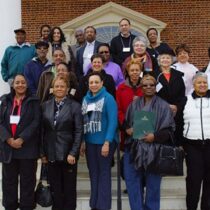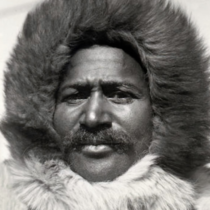
In November and January in this column, I described the search for the physical location of the city of Sodom, somewhere near the Dead Sea. But perhaps even more interesting is the search for the influence of sinful Sodom on our own lives, in the present day. This influence is felt mainly through the widespread societal persecution of homosexual relations, which even takes the negative word “sodomy” from the name of the 3675-year-old, missing and dead city of Sodom.
The crime of sodomy has led to the execution of hundreds of people over the last few centuries, including many in Europe and Britain who were burned alive or decapitated in the 1500s to the 1700s. Some “sodomites” were put in public cages and starved to death. Sodomy was a capital offense in many American colonies before the Revolution, but sentences were generally reduced after independence.
Maryland, for example, in 1809 set the sentence for sodomy at up to ten years in prison. This law was declared unconstitutional in 1999, yet four men were arrested in 2021 in Harford County (north of Baltimore) for sodomy at an adult bookstore. The Maryland sodomy law was not explicitly repealed until October 1, 2023!
What is sodomy? Legally, it depends on where you are. As of 2024, 61 countries had laws criminalizing sexual activity between individuals of the same sex, and the legal definitions included anal, oral or manual relations, or sex with animals, or some mixture of these, or some vague definition, or even oral or anal sex between men and women. But many jurisdictions only really prosecute male on male anal and oral sex.
A lot of the justification for this attitude goes back to the alleged reason for the destruction of Sodom, as described in the Bible in Genesis, chapter 19 (and the Quran 7:80-82). For example, The Trumpet, an online fundamentalist Christian newspaper, describes the Biblical incident this way: God sent two angels disguised as men to investigate the sins of Sodom and met Lot, who was sitting in the city’s gateway (where I may have been just months ago!). Lot welcomed them and insisted they shelter for the night in his home. But “the men of the city gathered and demanded that Lot send his male guests out,” so ”that we may know them.” At least one Biblical translation (by Moffatt) translates this latter verse (number 5) as “so we can rape them.” Then Sodom was destroyed by God with fire and brimstone for this terrible offense of homosexuality.
So does this one incident 3675 years ago clearly direct us to outlaw, persecute and even execute homosexuals? Here are the key arguments against this interpretation:
First, some scholars argue that “know” does not necessarily mean “rape” or “have sex,” and may just mean “find out who these strangers are” since they might be spies or criminals. But most experts in Biblical translation agree that the crowd of men did want to “know” the visitors in a forced sexual sense. Still, there is some doubt about this.
Second, the main offense was not really the homosexuality of the crowd, who were undoubtedly mostly heterosexual males – it was the fact that they wanted to violently rape and thus humiliate these strangers, when it was the tradition of the time that all strangers should be offered shelter, food and hospitality. Lot makes that clear (Genesis 19:8) when he states, “Don’t do anything to these men, for they have come under the protection of my roof.”
Third, the violence of the crowd in Sodom has nothing to do with modern, committed and loving homosexual relations between two men or two women.
Fourth, other Biblical references to Sodom make it clear that homosexuality was not what offended God. For example, in Isaiah 1:21-23 the prophet states that Sodom was “once full of justice and righteousness used to dwell in her – but now murderers! Your rulers are rebels, partners with thieves, they all love bribes and chase after gifts.” Jeremiah 23 highlights the sins of Sodom and Jerusalem as adultery, idolatry and abuse of power. Amos 4 and Zephaniah 2 criticize Sodom for “oppressing the poor.” Ezekiel 16 calls Sodom “arrogant, overfed and unconcerned with the poor and needy.” (Hmmm, sounds like some modern Administrations I could name!)
Fifth, later Christian texts do not focus on Sodom’s homosexuality. For example, the 2nd century BC “Testament of the Twelve Patriarchs” focuses solely on the heterosexual promiscuity sins of Sodom.
Sixth, Jesus (remember him, founder of Christianity?) mentions Sodom, but never discusses its homosexuality, rather its lack of hospitality (Matthew 10), unrepentance (Luke 10) and general licentiousness (Peter 2).
Seventh, the focus on Sodom’s sin of homosexuality did not really get started until the fifth century AD, with the writing of theologians Paulus Orosirus and St. Augustine. But even they thought the real sin was material excess, which led to out-of-control sexuality, including “men rushing upon men, committing base acts.”
Eighth, the term “sodomy” was not coined until the mid-eleventh century by Saint Peter Damian, and even then it referred to non-procreative sex such as masturbation and oral intercourse, as well as to male-to-male sexual relations.
Ninth and most important, why should the modern US government and its states, a secular structure based on the separation of Church and State, pay any attention to an incident thousands of years old with little relevance to current views of social justice?
Finally, consider the sequels to the main Biblical incident. Lot offered up his two virgin daughters to the angry mob, saying that they could be gang-raped in place of the two strangers! Later, after escaping from Sodom, those same two daughters got Lot drunk and raped him while he was unconscious, so that they might have children. Yet God did not punish Lot or his daughters.
Apparently we are meant to worship a God who destroys an entire city for its inhospitality or violence or perhaps its homosexuality, but who does not mind rape or incest.
Huh?
Photos courtesy Lew Toulmin
- 1. A modern drawing of the destruction of Sodom by God. Lot and his two daughters are escaping on the right; Lot’s wife has turned to look at the destruction and will be transformed into a pillar of salt for this mortal crime. (Huh?) (From 76crimes.com.)
- 2. Lot shows his two visitors hospitality by inviting them into his home and feeding them. In the Biblical story it is clear that the two visitors are angels investigating Sodom, but are disguised as human men with no wings showing. (Painting c. 1630 by Rutilio Manetti.)
- 3. Two angels visiting Lot blind the violent crowd of the men of Sodom who want to gang-rape the visiting angels, now shedding their disguise as men. (Painting 18th century by Charles-Andre Van Loo.)
- 4. The two daughters of Lot, after the destruction of Sodom, living with Lot in a cave. They are getting their father drunk so they can rape him and incestuously have children. (We weren’t taught that part in Bible School!) (Painting c. 1640 by the famous and talented Italian female artist Artemesia Gentileschi, who was a victim of rape at age 17.)
- 5. St. Peter Damian (1007-1072) was an Italian Benedictine monk and later Cardinal, who first coined the term “sodomy,” derived from the doomed city of Sodom. But he defined the term as including masturbation and oral sex by either sex, as well as homosexual relations. Hence under this original definition, and using data from the 2018 Tenga Global Self Pleasure Report, at least 92% percent of American men and 76% of American women are sodomites!
- 6. Mervyn Tuchet, the Right Honourable 2nd Earl of Castlehaven, Member of Parliament for Dorset, was executed by beheading at Tower Hill beside the Tower of London in 1625 for the “unnatural crime” of sodomy and rape. He allegedly had relations with two of his male servants and encouraged and assisted in the rape of his wife by another servant.
- 7. In 1835 James Pratt and John Smith became the last men hung in England for “buggery” (homosexual sodomy/anal sex). They were executed on questionable evidence at the Old Bailey, London. The buggery statute was not repealed until 2003.
- 8. The Hoey Report was part of the “Lavender Scare” which went on from the late 1940s to the 1960s in the US, and involved efforts to purge “homosexuals and other perverts” from service in the Federal government. Thousands of civil servants were forced out of their jobs.
- 9. Statista reported that crimes against the LGBTQ community rose from 2022 to 2023, especially against lesbians, bi-sexuals and transgender persons. These data are estimated to be under-reported by almost 50 percent.


























































Comments are closed.